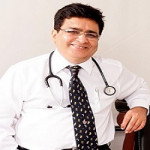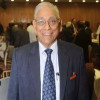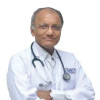
Written By:
 Dr. Vinod M Vijan
Dr. Vinod M Vijan
 Dr. Vinod M Vijan
Dr. Vinod M Vijan
Published On: 17 Aug, 2022 4:21 PM | Updated On: 17 Dec, 2025 1:09 PM
New Lipid Guidelines
- Cardiovascular disease in India is challenging as it occurs at a young age.
- Dyslipidemia is one of the biggest risk factors for CVD.
- Statins are an opportunity in India.
- Statins have now become one of the most prescribed drugs for both primary and secondary prevention of coronary heart disease (CHD) because they have benefits beyond LDL reductions like pleiotropic benefits and plaque stabilization.
- Limitation of statins can be statin-associated adverse events that can be managed by counseling for benefit or harm.
- Newer options like PCSK9 inhibitors can be explored in severe cases. Ezetimibe and eicosapentaenoic acid are promising add-ons.
- Top 10 take-home messages
- In all individuals, emphasize a heart-healthy lifestyle across the life course.
- In patients with clinical ASCVD, reduce LDL-C with high-intensity statin therapy or maximally tolerated statin therapy.
- In very high-risk ASCVD, use an LDL-C threshold of 70 mg/dL (1.8 mmol/L) to consider the addition of nonstatins to statin therapy.
- In patients with severe primary hypercholesterolemia (LDL-C level ≥190 mg/dL [≥4.9 mmol/L]), begin high-intensity statin therapy without calculating 10-year ASCVD risk.
- In patients 40 to 75 years of age with diabetes mellitus and LDL-C ≥70 mg/dL (≥1.8 mmol/L), start moderate-intensity statin therapy without calculating 10-year ASCVD risk.
- In adults 40 to 75 years of age evaluated for primary ASCVD prevention, have a clinician-patient risk discussion before starting statin therapy.
- In adults 40 to 75 years of age without diabetes mellitus and with LDL-C levels ≥70 mg/dL (≥1.8 mmol/L), at a 10-year ASCVD risk of ≥7.5%, start a moderate-intensity statin if a discussion of treatment options favors statin therapy.
- In adults 40 to 75 years of age without diabetes mellitus and 10-year risk of 7.5% to 19.9% (intermediate risk), risk-enhancing factors favor initiation of statin therapy.
- In adults 40 to 75 years of age without diabetes mellitus and with LDL-C levels ≥70-189 mg/dL (≥1.8-4.9 mmol/L), at a 10-year ASCVD risk of ≥7.5 19.9%, if a decision about statin therapy is uncertain, consider measuring CAC.
- Assess adherence and percentage response to LDL-C-lowering medications and lifestyle changes with repeat lipid measurement 4 to 12 weeks after statin initiation or dose adjustment, repeated every 3 to 12 months as needed.

Dr. Vinod M Vijan
Dr. Vinod M Vijan is a MD., DM., FCSI, FICC, FICP, FIAE, FICMU, FISE, FESC Senior most reputed Interventional cardiologist in North Maharashtra Owner and Director of Vijan Hospital and Research Centre Recipient of IMA & prestigious Dhanwantari Award Recognition as Icons of Echocardiography in India Award and Life Member and Fellow of most Cardiology, Physicians & Critical care societies.










Please login to comment on this article